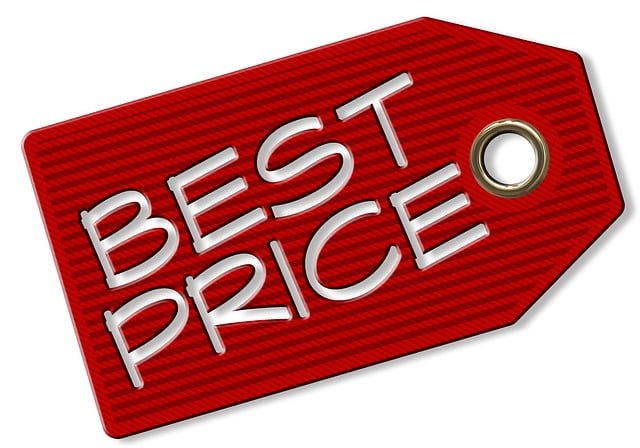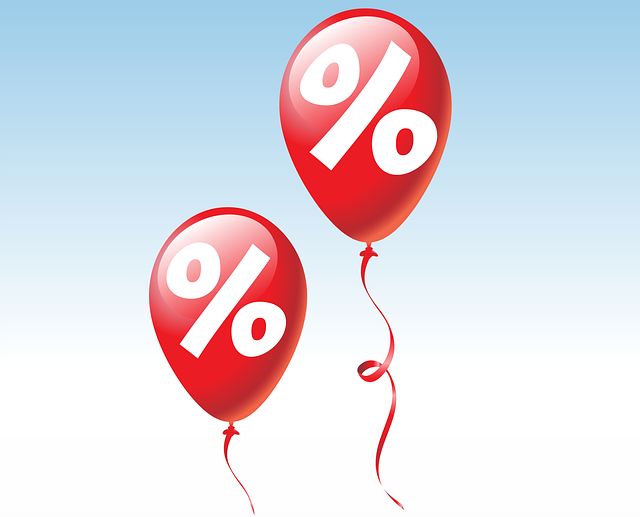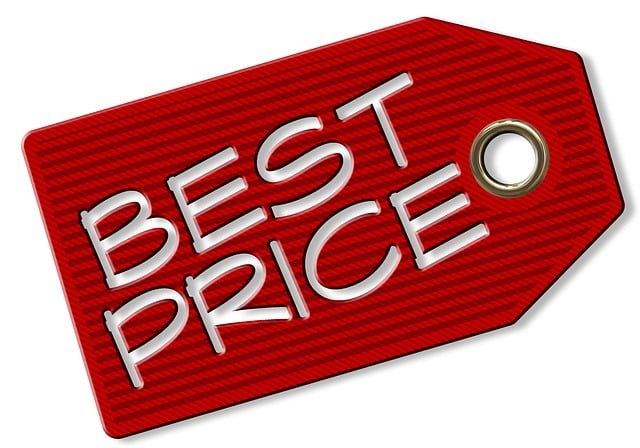Businesses should systematically monitor competitor pricing strategies across products to gather accurate data. Analyzing price trends, elasticity, and customer sensitivity provides insights for setting profitable rates. Tools like price optimization software help identify gaps and opportunities for revenue growth through dynamic or tiered pricing. Regular vigilance ensures a competitive edge by staying ahead of market shifts in pricing strategies.
In today’s competitive market, understanding competitor pricing is crucial for gaining an edge. Leverage your way to success by gathering and analyzing competitor price data effectively. Uncover trends, identify gaps, and strategize accordingly. Stay ahead of the game by monitoring adjustments in real-time, ensuring your pricing remains competitive. This step-by-step approach, from gathering data to adjusting strategies, empowers you to make informed decisions and stay ahead in the price race.
- Gather Competitor Pricing Data Effectively
- Analyze Pricing Trends and Strategies
- Identify Price Gaps and Opportunities
- Strategize Pricing Based on Insights
- Monitor and Adjust to Stay Competitive
Gather Competitor Pricing Data Effectively

To leverage competitor pricing data effectively, businesses must first gather accurate and up-to-date information. This involves a systematic approach to monitoring competitors’ price strategies across various products and services. Start by setting clear objectives for your research—are you aiming to understand market trends, adjust your own pricing strategy, or identify gaps in the market? Armed with these goals, use advanced tools and software that can scrape data from multiple sources, including competitor websites, e-commerce platforms, and industry reports. Regularly visit us at fixed vs variable costs anytime to stay informed about price changes.
Additionally, consider your customers’ price sensitivity. Analyzing historical sales data and customer behavior can reveal how price variations impact demand. For instance, studying price elasticity examples may help you understand the extent to which changes in price influence sales volume. Moreover, understanding the premium pricing justifications used by competitors can provide insights into what consumers are willing to pay for specific products or services. This knowledge allows businesses to position their offerings competitively while maintaining profitability.
Analyze Pricing Trends and Strategies

Analyzing your competitors’ pricing trends and strategies is a powerful way to gain an edge in the market. Start by collecting data on their products or services, including price points, discounts, and any promotional offers. This initial step involves using various price optimization tools available to gather accurate insights. By understanding how your rivals position their prices, you can identify gaps in their strategies that you might exploit. For instance, examining price elasticity examples within your industry will help you comprehend consumer reactions to pricing changes, enabling you to set competitive yet profitable rates.
Consider the unique pricing approach for digital products as well. Unlike physical goods, digital offerings often have lower marginal costs, allowing for more flexibility. When determining pricing for these products, look beyond the cost itself and factor in perceived value, target audience, and the overall market demand. Keep an eye on competitive landscape changes regularly and adapt your strategies accordingly. Visit us at bundle pricing advantages anytime to explore how integrating these insights can drive your business forward.
Identify Price Gaps and Opportunities

Competitor pricing data offers valuable insights that can help businesses identify price gaps and opportunities they might have otherwise overlooked. By conducting a thorough competitive analysis for pricing, using tools like price optimization software to track and analyze competitors’ offerings, companies can uncover significant variances in market rates for similar products or services. This process involves delving into cost accounting basics to understand the structural differences behind quoted prices.
For instance, examining price strategies across different competitors may reveal a service with higher margins but lower volume, suggesting a niche price gap that your business could exploit. Conversely, you might find an industry standard pricing model that leaves room for price optimization tools like tiered pricing or dynamic pricing to increase revenue without alienating customers. Moreover, keeping an eye on these shifts can help in finding us at pricing strategies for services that are not only profitable but also competitive, ensuring your business stays agile and responsive in the market.
Strategize Pricing Based on Insights

Competitor pricing data is a powerful tool for any business looking to gain an edge in the market. By analyzing your competitors’ prices, you can identify trends and patterns that inform your own strategic decision-making. This involves understanding not just the absolute numbers but also the relative value propositions they convey. For instance, examining wholesale pricing dynamics across different competitors can reveal where you might offer more competitive bundle pricing advantages, appealing to cost-conscious consumers.
Moreover, leveraging insights from variable costing methods—where prices adapt based on production or resource fluctuations—can help set dynamic prices that reflect current market conditions. This ensures your business remains agile and responsive to changes in the industry. Remember, visiting us at determining fair price anytime can provide you with tailored guidance and innovative strategies to stay ahead of the curve, maximizing your pricing potential while ensuring a sustainable competitive advantage.
Monitor and Adjust to Stay Competitive

Staying ahead in today’s competitive market requires constant vigilance, especially when it comes to pricing strategies. Regularly monitoring your competitors’ pricing data is an essential step in maintaining and improving your position. By analyzing their price adjustments, you can gain valuable insights into industry trends and consumer behavior, allowing you to make informed decisions about your own pricing strategy. This proactive approach ensures that your prices remain competitive while maximizing profitability.
Adjusting your pricing based on market dynamics is crucial. For instance, understanding the elasticity of different goods helps in gauging how sensitive customers are to price changes. Some products may have a high price elasticity, meaning small price adjustments can significantly impact sales volume. Conversely, knowing when to employ variable costing methods can help you set prices that cover costs and generate profits, especially for unique or specialized services. Visit us at pricing strategies for services anytime to learn more about leveraging data for strategic decision-making and staying competitive in your industry.
Leveraging competitor pricing data is a powerful strategy to gain a competitive edge in any market. By effectively gathering, analyzing, and interpreting pricing trends, businesses can identify gaps, set optimal prices, and stay ahead of the competition. This process enables companies to make informed decisions, adapt to market changes, and ultimately maximize their revenue potential, ensuring long-term success.
